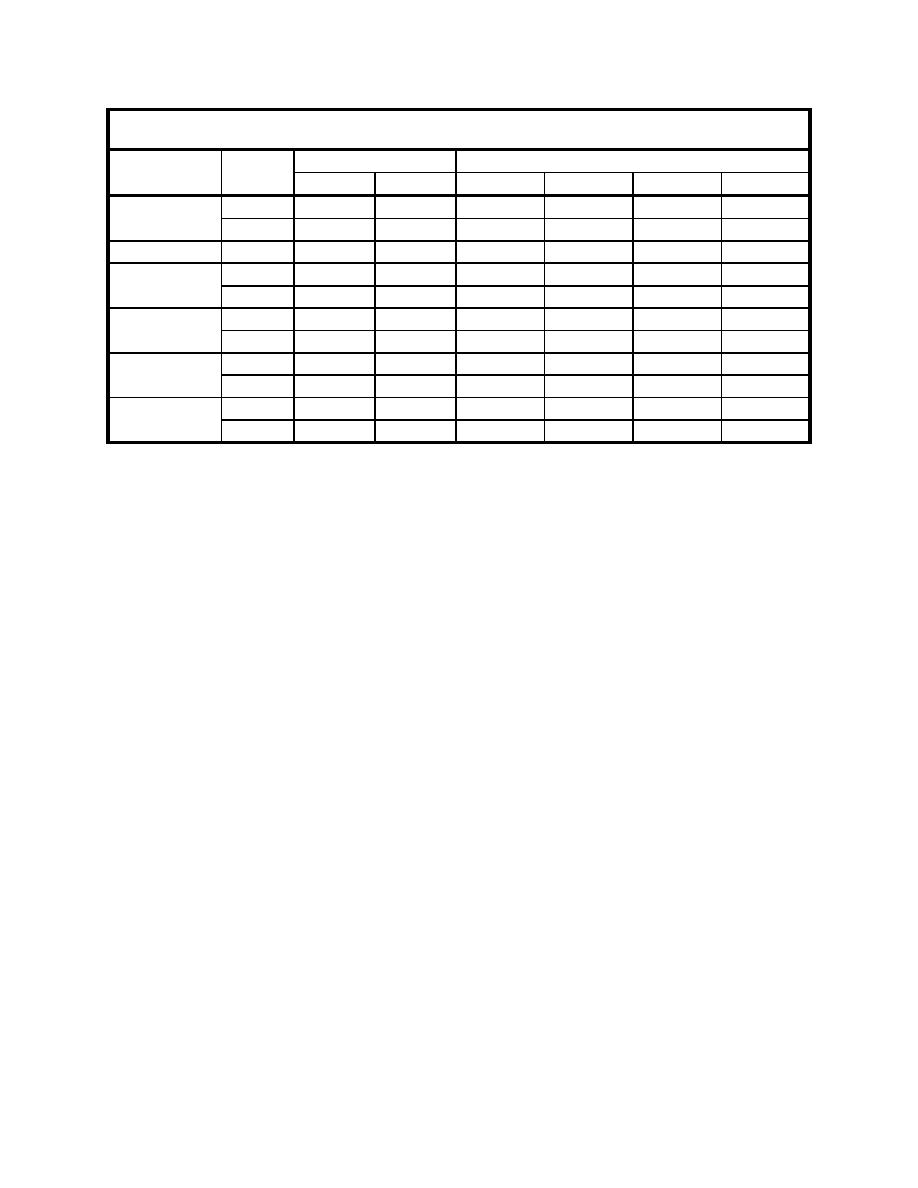
ERDC/CHL CHETN-IX-14
March 2004
Table 5
Observed and Computed Squat
Observed, m
Predicted, m
Vessel
Location
Bow
Stern
Huuska
Barrass
Rom. Bow
Rom. Stern
OJ
0.99
1.18
1.86
1.58
1.09
1.35
Alligator Liberty
IJ
0.70
1.11
1.59
1.41
0.84
1.05
OJ
0.97
1.08
1.39
1.56
0.61
0.92
Ever Diamond
OJ
0.87
0.43
0.98
0.91
0.63
0.42
Golden Farmer
RR
0.53
0.12
1.03
0.94
0.66
0.43
OJ
0.49
2.05
2.07
1.97
1.05
1.88
Munkebo Maersk
RR
-0.15
-0.02
0.23
0.31
0.09
0.16
OJ
0.55
0.66
0.84
1.04
0.34
0.50
Newark Bay
RR
0.12
0.14
0.19
0.26
0.09
0.12
OJ
1.12
0.80
1.48
1.30
0.72
0.86
MSC Sabrina
IJ
0.85
0.61
1.43
1.27
0.69
0.82
In general, the Barrass and Huuska equations overpredicted the observed maximum squat for all
cases. The Romisch bow and stern predictions were very good, especially the stern squat predictions.
A least square fit to a second order polynomial with intercept zero was calculated for each of the
four squat predictors. The correlation coefficient R2 = 0.90, 0.91, 0.47, and 0.91 for the Barrass,
Huuska, Romisch Bow, and Romisch Stern, respectively. Thus, the Romisch Stern is the best
predictor of all the empirical equations, but the Barrass and Huuska are good from the standpoint
that they are conservative since they overpredict the squat. The Huuska tends to have larger
overpredictions with larger squat values, however.
SUMMARY AND CONCLUSIONS: The evaluation of squat using GPS is a significant
improvement over previous techniques. GPS not only provides precise vertical and horizontal
position, but also an accurate measurement of ship speed that also has been a limitation in previous
studies. The speed plots show significant variation of speed along the transit. One problem that
plagued previous studies and this study is the accurate determination of water level and ambient
channel velocity along the path of the ship. At Charleston Harbor, the water level and velocity
problems were difficult because of the semidiurnal tides up to 1.8 m (6 ft). Another concern is
whether the ship takes on or discharges ballast water. Obviously, a change in the ship's draft can
inadvertently affect the observed squat measurements. It is particularly important to discuss these
concerns with the pilot and ship's captain and to monitor ship operations between the at-rest
reference measurements and the time the measurements are taken.
When comparing squat measurements to squat prediction equations, locations along the ship channel
where squat will be evaluated should be selected at a relatively uniform cross section since the
empirical prediction equations are only valid under these conditions. While conducting the onboard
GPS measurements, the ship operators should be asked to maintain a relatively constant speed in the
preselected, constant cross-section reaches. The lack of a constant ship speed in the constant cross-
section reaches eliminated a significant amount of the Charleston Harbor data from the analysis.
19



 Previous Page
Previous Page
